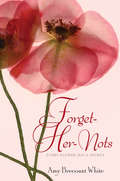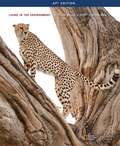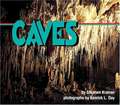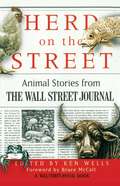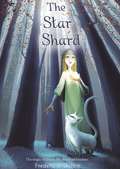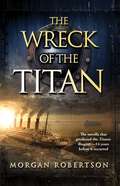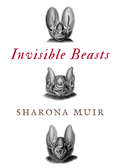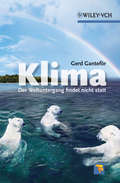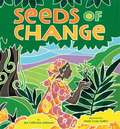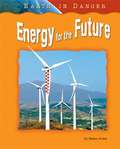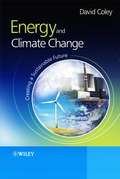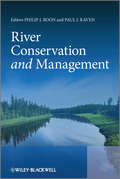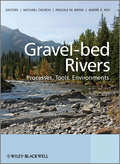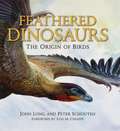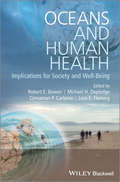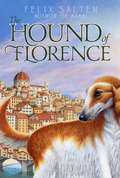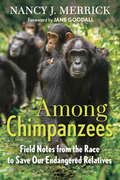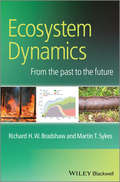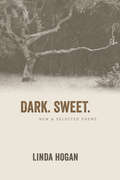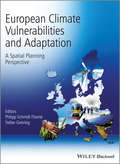- Table View
- List View
Forget-Her-Nots
by Amy Brecount WhiteSomething-some power-is blooming inside Laurel. She can use flowers to do things. Like bringing back lost memories. Or helping her friends ace tests. Or making people fall in love. Laurel suspects her newfound ability has something to do with an ancient family secret, one that her mother meant to share with Laurel when the time was right. But then time ran out. Clues and signs and secret messages seem to be all around Laurel at Avondale School, where her mother had also boarded as a student. Can Laurel piece everything together quickly enough to control her power, which is growing more potent every day? Or will she set the stage for the most lovestruck, infamous prom in the history of the school?
Human Ecology: A Theory of Community Structure
by Amos H. HawleyThis volume attempts to develop a full and coherent theory of human ecology. Working from the assumption that there is continuity in the life patterns of all organic forms, the argument begins with the contributions of plant and animal ecologists and seeks to elaborate the logical implications of general ecological theory. This leads to the investigation of a fundamental yet long neglected sociological problem, namely, the nature and development of community structure.
Images of Anarchy
by Ioannis D. EvrigenisHobbes's concept of the natural condition of mankind became an inescapable point of reference for subsequent political thought, shaping the theories of emulators and critics alike, and has had a profound impact on our understanding of human nature, anarchy, and international relations. Yet, despite Hobbes's insistence on precision, the state of nature is an elusive concept. Has it ever existed and, if so, for whom? Hobbes offered several answers to these questions, which taken together reveal a consistent strategy aimed at providing his readers with a possible, probable, and memorable account of the consequences of disobedience. This book examines the development of this powerful image throughout Hobbes's works, and traces its origins in his sources of inspiration. The resulting trajectory of the state of nature illuminates the ways in which Hobbes employed a rhetoric of science and a science of rhetoric in his relentless pursuit of peace.
How Much is Clean Air Worth?
by Ari Rabl Joseph V. Spadaro Mike Holland Ari Rabl Joseph V. SpadaroHow Much is Clean Air Worth? offers readers a comprehensive overview of the core methodologies and tools used to quantify the impacts and damage costs of pollution. The book begins by reviewing the tools used for environmental assessments and shows that a rational approach requires an impact pathway analysis (IPA) for each of the possible impacts of a pollutant, i. e. an analysis of the chain emission ->dispersion ->exposure-response functions ->monetary valuation. The IPA methodology is explained in full and illustrated with worked examples, and difficulties are discussed and uncertainties analysed. In addition to detailed computer models, a very simple model (the 'Uniform World Model') is presented, enabling readers to make estimates for cases where no results are available. Published results for electricity, waste treatment and transport are reviewed, with a thorough discussion of policy implications. This book will appeal to a broad mix of academics, graduate students and practitioners in government and industry working on cost-benefit analysis, environmental impact analysis and environmental policy.
A Plague of Sheep
by Elinor G. K. MelvilleThis is a book about the biological conquest of the New World. Taking as a case study the sixteenth-century history of a region of highland central Mexico, it shows how the environmental and social changes brought about by the introduction of Old World species aided European expansion. The book spells out in detail the environmental changes associated with the introduction of Old World grazing animals into New World ecosystems, demonstrates how these changes enabled the Spanish takeover of land, and explains how environmental changes shaped the colonial societies.
Caves: Nature in Action
by Stephen KramerLearn more about how caves are made and what goes on within them.
Herd on the Street
by Ken Wells Bruce MccallFor more than sixty years, The Wall Street Journal has prided itself not just on its serious journalism, but also on the whimsical and arcane stories that amuse and delight its readers. In that regard, animal stories have proven to be the most beloved of all. Now, veteran Journal reporter and Page One editor Ken Wells gathers the finest, funniest, and most fascinating of these animal tales in one exceptional book. Here are lighthearted, witty stories of breakthroughs in goldfish surgery, the untiring efforts of British animal lovers who guide lovesick toads across dangerous motorways, and the quest to tame doggy anxieties by prescribing the human pacifier Prozac. Other pieces reflect on mankind's impact on the animal kingdom: a close-up look at the nascent fish-rights movement, the retirement of U.S. Air Force chimpanzees that once soared through space, and ongoing scientific efforts to defeat that most hardy enemy -- the cockroach. Each of these fifty-odd stories -- from the outlandish to the poignant -- exemplifies the superb feature writing that makes The Wall Street Journal one of America's best-written newspapers. This charming and utterly captivating collection will be a joy not only to animal lovers, but to all those who appreciate artful storytelling by writers who are obviously having a wonderful time spinning the tales.
The Star Shard
by Frederic S. DurbinThis beautifully written fantasy tackles the issues of slavery and freedom. Twelve-year-old Cymbril is a slave on Thunder Rake, a gigantic wagon city that rolls from town to town carrying goods to be sold by its resident merchants. The Rake's master purchases a new slave, a mysterious boy named Loric who is one of the magical Fey. Because he can see in the dark, Loric's duty is to guide the Rake through the treacherous wilderness at night.Cymbril and Loric secretly join forces to plan their escape--soon the two friends thread their way through a series of increasing dangers, encountering an enchanted market and deadly monsters as their one chance for freedom draws nearer.
The Wreck of the Titan
by Morgan RobertsonA novella of unrequited love, human arrogance, and deadly tragedy that predicted the legendary Titanic disaster...fourteen years before it happened. In 1898, Morgan Robertson penned The Wreck of the Titan, a love story set aboard the Titan, the most advanced steamship of the age. When the "unsinkable" passenger liner hit an iceberg, nearly all its passengers perished at sea. On April 15, 1912, the most advanced steamship of its age, the "unsinkable" Titanic, struck an iceberg and was lost to the ocean, becoming forever immortalized as a cultural touchstone. The similarities between the fact of the Titanic and the fiction of the Titan are more than just name-deep. Both stories tell the tale of real humans faced with an unfathomable disaster, and the hopes of humankind at the turn of a new century. As the 100th anniversary of the sinking of the Titanic is remembered, Robertson's work of fiction gives great insights into the human scope of the tragedy...and the enduring power of love. Includes a special excerpt from the all-new Titanic thriller, The Titanic Secret, by Jack Steel--Available in stores and online now!
Invisible Beasts
by Sharona Muir"An amazing feat of imagination." -Publishers Weekly (starred review)"Invisible Beasts is a strange and beautiful meditation on love and seeing, a hybrid of fantasy and field guide, novel and essay, treatise and fable. With one hand it offers a sad commentary on environmental degradation, while with the other it presents a bright, whimsical, and funny exploration of what it means to be human. It's wonderfully written, crazily imagined, and absolutely original." -ANTHONY DOERR, author of All the Light We Cannot See and The Shell CollectorSophie is an amateur naturalist with a rare genetic gift: the ability to see a marvelous kingdom of invisible, sentient creatures that share a vital relationship with humankind. To record her observations, Sophie creates a personal bestiary and, as she relates the strange abilities of these endangered beings, her tales become extraordinary meditations on love, sex, evolution, extinction, truth, and self-knowledge.In the tradition of E.O. Wilson's Anthill, Invisible Beasts is inspiring, philosophical, and richly detailed fiction grounded by scientific fact and a profound insight into nature. The fantastic creations within its pages-an ancient animal that uses natural cold fusion for energy, a species of vampire bat that can hear when their human host is lying, a continent-sized sponge living under the ice of Antarctica-illuminate the role that all living creatures play in the environment and remind us of what we stand to lose if we fail to recognize our entwined destinies.Sharona Muir is the author of The Book of Telling: Tracing the Secrets of My Father's Lives. The recipient of a Hodder Fellowship and National Endowment for the Arts Fellowship, her writing has appeared in Granta, Orion magazine, Virginia Quarterly Review, The Paris Review, and elsewhere. She is a Professor of Creative Writing and English at Bowling Green State University. Invisible Beasts is her first novel.
Klima
by Gerd GanteförPanikmache oder sicheres Weltende? Was vom "Klimawandel" wirklich zu halten istKaum ein Thema erregt die Gemüter so wie die Frage, ob der Klimawandel uns alle ins Verderben stürzt oder wir nur einer Angst fördernden Kampagne hysterischer Umweltaktivisten aufsitzen. Die Diskussionen werden heiß geführt und münden oft in extreme Positionen und widersprüchliche Szenarien. Und eines ist bei alldem selten zu finden: verlässliche Orientierung. Genau diese bietet Gerd Ganteför mit seinem Buch.Orientierung durch WissenGerd Ganteför überprüft die gängigen Argumente, Mythen und Legenden: unabhängig, seriös und wissenschaftlich fundiert. So leistet er nicht nur eminent wichtige Aufklärungsarbeit, sondern fördert auch einige handfeste Überraschungen zu Tage. Der staunende Leser erfährt etwa, dass Flugreisende energieeffizienter unterwegs sind als Autofahrer, und er bekommt eine Vorstellung davon, was die Menschheit bei der nächsten Eiszeit erwartet. Ganz nebenbei vermittelt der Autor dabei fundiertes Wissen zu den zentralen Zukunftsthemen Klima und Energie.Provokation mit ArgumentenGanz bewusst tritt Gerd Ganteför der grassierenden "Lust am Untergang" entgegen. So verweist er auf die Vorteile der Klimaerwärmung, bindet Kohle- und Kernkraftwerke in eine Strategie zum Naturschutz ein und bescheinigt den Verfechtern regenerativer Energien, einem schönen Traum nachzuhängen. Selten sind solche Thesen mit so guten Argumenten vertreten worden wie in diesem Buch.
Seeds of Change: Planting a Path to Peace
by Jen Cullerton JohnsonA biography of scientist Wangari Maathai, the first African woman - and first environmentalist - to win a Nobel Peace Prize in 2004 for planting trees in her native Kenya.
Energy for the Future (Earth in Danger)
by Helen OrmeBurning fossil fuels, such as oil and coal, may be accelerating Earth's climate change. How can we develop clean, renewable sources of energy and reduce our dependence on fossil fuels? Energy for the Future clearly presents the pros and cons of alternative energy sources-- from wind, water, and solar power to bio-fuels, hydrogen fuel cells, and nuclear power. A section in the back of the book will inspire young environmentalists by suggesting ways they can help protect their planet.
Energy and Climate Change
by David ColeyFor more information on this title, including student exercises, please visit , http://www.people.ex.ac.uk/DAColey/Energy and Climate Change: Creating a Sustainable Future provides an up-to-date introduction to the subject examining the relationship between energy and our global environment. The book covers the fundamentals of the subject, discussing what energy is, why it is important, as well as the detrimental effect on the environment following our use of energy. Energy is placed at the front of a discussion of geo-systems, living systems, technological development and the global environment, enabling the reader to develop a deeper understanding of magnitudes.Learning is re-enforced, and the relevance of the topic broadened, through the use of several conceptual veins running through the book. One of these is an attempt to demonstrate how systems are related to each other through energy and energy flows. Examples being wind-power, and bio-mass which are really solar power via another route; how the energy used to evaporate sea water must be related to the potential for hydropower; and where a volcano's energy really comes from.With fermi-like problems and student exercises incorporated throughout every chapter, this text provides the perfect companion to the growing number of students taking an interest in the subject.
River Conservation and Management
by Paul Raven Philip BoonThis book is intended for those with an academic, scientific and practical interest in river conservation and management. It provides an overview of how changes in legislation, policies, institutional responsibilities, science, technology, practical techniques and public perception have influenced how rivers have been managed over the past 20 years and the challenges that lie ahead during the next 20 years.The book is based on the international conference River Conservation and Management:20 Years On held at York. Thirty-one chapters, with contributions from North and South America, Europe, Asia and Australasia provide a wide-ranging perspective on this complex but profoundly important subject. Following an introduction that chronicles the most important contextual changes, the book is organized into four broad topics:Catchment management, ecosystem integrity and the threats to river ecosystems - this covers progress on understanding and addressing the pressures affecting rivers, many of which will be amplified by climate change and increasing human demands for water; Methods and approaches - illustrating some recent techniques that have been developed to assess condition and conservation status across different types of river; Recovery and rehabilitation - providing an insight into the principles, practice, public involvement and institutional networks that support and make improvements to modified river reaches; Integrating nature conservation into wider river management -demonstrating the importance of integrated planning, involvement of local communities and the use of adaptive management in achieving multiple environmental and economic benefits along rivers used for different purposes. The final chapter discusses the challenges faced in dealing with an uncertain future.More than 1200 different references and numerous web-site citations provide the reader with an invaluable source of knowledge on the subject area.
Gravel Bed Rivers
by Michael Church Pascale Biron Andre RoyGravel-Bed Rivers: Processes, Tools, Environments presents a definitive review of current knowledge of gravel-bed rivers, derived from the 7th International Gravel-bed Rivers Workshop, the 5-yearly meeting of the world's leading authorities in the field.Each chapter in the book has been specifically commissioned to represent areas in which recent progress has been made in the field. The topics covered also represent a coherent progression through the principal areas of the subject (hydraulics; sediment transport; river morphology; tools and methods; applications of science).Definitive review of the current knowledge of gravel-bed rivers Coverage of both fundamental and applied topics Edited by leading academics with contributions from key researchers Thoroughly edited for quality and consistency to provide coherent and logical progression through the principal areas of the subject.
Feathered Dinosaurs: The Origin of Birds
by John A. Long Peter SchoutenScientists have recovered more than a billion fossils, but no discovery has been more breath-taking than the fossils recently found in northern China, findings which prove that several families of dinosaurs had feathers, or feathery hair-like coverings, adorning their bodies. Now in the beautifully designed Feathered Dinosaurs, paleontologist John Long and illustrator Peter Schouten provide a stunning visual record of these extraordinary prehistoric creatures, illuminating the evolutionary march from primitive, feathered dinosaurs through to the first true flying birds. Schouten, an acclaimed natural history artist, has created 80 full-color paintings that capture the striking physical traits of these feathered dinosaurs. Drawing on his extensive knowledge of the lifestyles of modern birds and mammals, plus the extant scientific data regarding how these dinosaurs might have looked and behaved, Schouten has produced not only the most beautiful but also the most accurate visual representations of these animals in print. Equally important, John Long, a noted paleontologist and widely published science author (with some 24 books to his credit), provides an engaging companion text that places these feathered dinosaurs within the larger family of dinosaurs--for instance, outlining their relationship to T. Rex and Velociraptor, species well known to Jurassic Park fans--and discusses the factual information that can be deduced from their fossil remains, in effect providing an insightful natural history of this remarkable group. A true marriage of art and science, Feathered Dinosaurs presents an unprecedented visual record of one of the most significant breakthroughs in the history of vertebrate paleontology--the discovery that many predatory dinosaurs were cloaked with feathers, perhaps just as colorful and fanciful as those of their living relatives.
Oceans and Human Health
by Robert E. Bowen Michael H. Depledge Lora E. Fleming Cinnamon P. CarlarneHuman health and well-being are tied to the vitality of the global ocean and coastal systems on which so many live and rely. We engage with these extraordinary environments to enhance both our health and our well-being. But, we need to recognize that introducing contaminants and otherwise altering these ocean systems can harm human health and well-being in significant and substantial ways.These are complex, challenging, and critically important themes. How the human relationship to the oceans evolves in coming decades may be one of the most important connections in understanding our personal and social well-being. Yet, our understanding of this relationship is far too limited.This remarkable volume brings experts from diverse disciplines and builds a workable understanding of breadth and depth of the processes - both social and environmental - that will help us to limit future costs and enhance the benefits of sustainable marine systems. In particular, the authors have developed a shared view that the global coastal environment is under threat through intensified natural resource utilization, as well as changes to global climate and other environmental systems. All these changes contribute individually, but more importantly cumulatively, to higher risks for public health and to the global burden of disease.This pioneering book will be of value to advanced undergraduate and postgraduate students taking courses in public health, environmental, economic, and policy fields. Additionally, the treatment of these complex systems is of essential value to the policy community responsible for these questions and to the broader audience for whom these issues are more directly connected to their own health and well-being."The seas across this planet and their effects on human society and its destiny are a fascinating subject for analysis and insights derived from intellectual inquiry. This diverse and complex subject necessarily requires a blending of knowledge from different disciplines, which the authors of this volume have achieved with remarkable success.""The following pages in this volume are written in a lucid and very readable style, and provide a wealth of knowledge and insightful analysis, which is a rare amalgam of multi-disciplinary perspectives and unique lines of intellectual inquiry. It is valuable to get a volume such as this, which appeals as much to a non-specialist reader as it does to those who are specialists in the diverse but interconnected subjects covered in this volume."(From the "Foreword" written by, R K Pachauri, Director General, TERI and Chairman, IPCC)
The Hound of Florence
by Felix Salten Huntley PatersonIt's a dog's life for a boy when he magically turns into a hound in this classic story from the author of Bambi.On a routine walk through the streets of his hometown of Vienna, Lucas Grassi sees an archduke's coach. He can't help but wish he was rich and powerful and leaving the dark city behind. And when he sees the archduke's faithful dog running alongside, he wishes he could just be the dog and be free from his everyday life. And then his wish comes true: Lucas does become the dog. Every other day he switches from his normal body to that of the archduke's canine companion. Soon he learns the dog is treated badly and the archduke is not a nice man. Lucas decides he'll do anything to reverse his wish...if only he knew what to do! Felix Salten's tale of a wish gone awry is brought back to life in this beautiful repackage.
Tales from the Blue Stacks
by Robert Bernen[from inside flaps] "Ten miles north of Donegal Town, in the extreme northwest of Ireland, runs a range of low, rounded hills known as the Blue Stacks. Their name is fitting, for from a distance they always appear a deep, purple blue, even on the clearest days. Around those hills live a small group of farmers whose lives continue to be rooted in the eighteenth-century pattern, or earlier. Robert Bernen, a gifted young American writer, and his wife moved to Ireland in 1970. Raising sheep on a Donegal hillside and living in the manner of their neighbors, they discovered that they had chosen a region in which much of the richness and variety of pre-modern existence still remained. While coping with the difficulties of restoring a derelict hill farm they yet found time to observe with sympathy and humor the vanishing mode of life around them. These attractive stories and sketches record some of the simple but lastingly memorable moments of that experience. The author spent part of his life studying those ancient languages that once seemed to men to be the mainstay of Western civilization: Hebrew, Greek, and Latin. In them he sought to find out not only literary values, but an experience of the human past as well. Six years spent among the illiterate and semiliterate hill farmers of the Blue Stacks provided, often unforeseen, a living completion of those studies. There he discovered many of the deepest interests and values of ancient men living on unnoticed. Some of those qualities are embodied in these pages: the Greek awe of nature and its wonders, the Roman fascination with men and their ordinary lives, the Hebrew commitment to life. "Marauder" preserves an event that occurred in the early part of the century, which the author heard casually and then carefully researched. "Hired Man" and "Joe's Return," seemingly simple stories of farm life, are also stories about loyalty--loyalty to God, to one's neighbors, and to one's self--and its betrayal and persistence. The quiet humor of "The Thatched Byre" and "The Yellow Dog" are drawn from the author's own experiences. "Danny's Debts" is a local tragedy occasioned by the sudden intrusion of modern developments into primitive farming ways. "The Resurrection of the Donkey" is one of those inconspicuous rural comedies that so often go unnoticed. The final story, "The Fence," sums up the qualities that give Blue Stack life its universal human interest."
Among Chimpanzees
by Jane Goodall Nancy J. MerrickA former student and colleague of Jane Goodall shares stories of chimps and their heroes, and takes readers on a journey to save man's closest relative. Unbeknownst to much of the public, chimps are in trouble: censuses show them to be extinct in four African countries and nearly so in ten others. A large percentage of the remaining populations live in unprotected, increasingly fragmented forests. When Nancy Merrick learned these startling facts in 2009, she decided it was past time to discover the extent to which chimpanzees are at risk across Africa and what can be done. Merrick had begun working with primates in 1972 as a young field assistant in Jane Goodall's famous Gombe camp. Like the rest of the world at the time, she was swept up in the excitement of discovering the remarkable world of chimpanzees--their ability to fashion tools, their dazzling intelligence, and their complex relationships and societies. From that moment on, her human-centered worldview shifted, and she became a devoted advocate for our closest genetic relatives. When Merrick returns to Africa decades later, she's alarmed by how much has changed. Human activity, such as agriculture and logging, has encroached on natural habitats throughout equatorial Africa, endangering chimpanzees, gorillas, and bonobos. In an effort to understand what we can do to save great apes, Merrick connects with primatologists and conservationists who are trying to protect the last great forests. Visits to some of Africa's parks, sanctuaries, and expanding agricultural areas reveal the urgency of the problems and the inspiration of the people leading the search for solutions. Along the way, Merrick demonstrates that the best hope for chimps and other great apes lies in connecting conservation to humanitarian efforts, ensuring a healthy future for animals and humans alike. Among Chimpanzees is at once an inspiring chronicle of Merrick's personal search to learn how chimps are faring across Africa and in captivity, a crucial eyewitness account of a very critical period in their existence, and a rousing call for us to join the efforts to be a voice for the chimpanzees, before it's too late.From the Hardcover edition.
Ecosystem Dynamics
by Richard Bradshaw Martin SykesEcosystem Dynamics focuses on long-term terrestrial ecosystems and their changing relationships with human societies. The unique aspect of this text is the long-time scale under consideration as data and insights from the last 10,000 years are used to place present-day ecosystem status into a temporal perspective and to test models that generate forecasts of future conditions. Descriptions and assessments of some of the current modelling tools that are used, along with their uncertainties and assumptions, are an important feature of this book. An overarching theme explores the dynamic interactions between human societies and ecosystem functioning and services. This book is authoritative but accessible and provides a useful background for all students, practitioners, and researchers interested in the subject.
Dark. Sweet.
by Linda HoganDark. Sweet. offers readers the sweep of Linda Hogan's work--environmental and spiritual concerns, her Chickasaw heritage--in spare, elemental, visionary language.From "Those Who Thunder":Those who thunderhave dark hairand red throw rugs.They burn paper in bathroom sinks.Their voices refuse to sufferand their silences know the waystraight to the heart;it's bus route number eight.Linda Hogan is the recipient of the 2007 Mountains and Plains Booksellers Spirit of the West Literary Achievement Award. Her poetry has received an American Book Award, Colorado Book Award, and a National Book Critics Circle nomination.
European Climate Vulnerabilities and Adaptation
by Philipp Schmidt-Thome Stefan GreivingEuropean Climate Vulnerabilities and Adaptation: A Spatial Planning Perspective analyses the impacts climate change might have on regions and their local economies. Regions clearly differ in view of the complex patterns of climate change impact, but also regarding the given vulnerability and coping capacity.Impacts of climate change can have a marked effect on the functioning of regions and sectors of the society, if not properly addressed. Readiness to adapt to the impacts and lasting changes counts towards vulnerability of the regions.The book builds upon the findings of a project conducted under the European observation network for territorial development and cohesion (ESPON), The ESPON Climate project. Following the stipulations of the ESPON programme and the tender for this project the territorial focus is the raison d'être and methodological core of the project as a whole and its various research actions: The outcomes of each action will be focused on what impacts global climate change will have for the different European regions and how the regions can cope with the projected impacts in order to become less vulnerable to climate change.This book: Provides a comprehensive analysis of climate change impacts on 29 European regions and their local economiesTakes an interdisciplinary approach dealing with the physical, social, economic, environmental, cultural and institutional aspects of climate change vulnerability and the consequences for spatial planningBuilds on the findings of the ESPON Climate project with a policy focused approachIs in full colour throughout with a broad range of case studies
